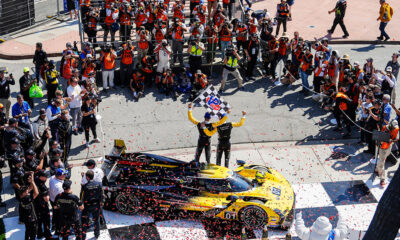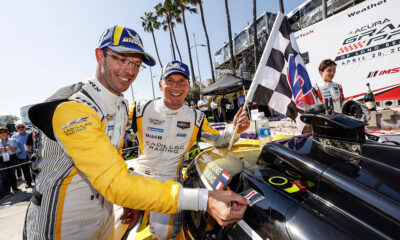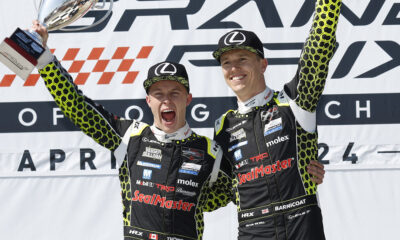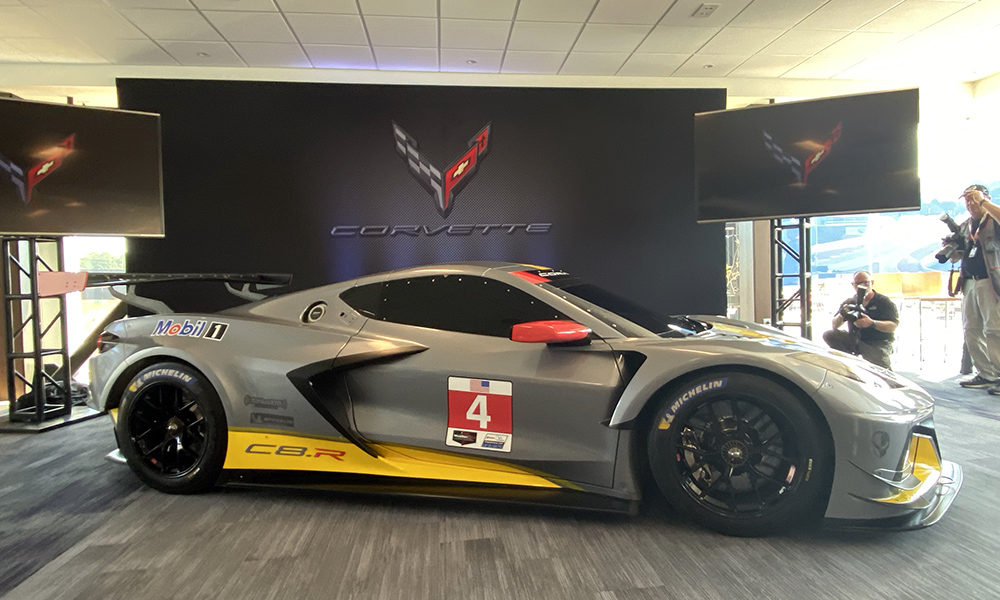
Photo: John Dagys
Technical details of the Chevrolet Corvette C8.R have been confirmed, including the 5.5-liter normally aspirated flat-plane crank V8 that will power the mid-engined GTE car when it debuts in January’s Rolex 24 at Daytona.
The car, presented Thursday to journalists at Michelin Raceway Road Atlanta, shares the “closest link” to its production counterpart ever, according to GM Racing director Mark Kent.
Development of the road and race car began six years ago in parallel, with more than 100 parts, including 80 percent of the structural components, shared between the two platforms.
“It was important for us to develop the new race car alongside the production car, so that each product could properly take advantage of the new architecture,” said Ed Piatek, Corvette chief engineer.
“The benefits of this mid-engine supercar, including its incredible balance and connected-to-the-road feel, will be obvious on the street and the track.”
Among the noticeable difference is the C8.R’s flat-plane crank V8, which is not currently offered in the production model.
While initial speculation pointed towards the use of a turbocharged powerplant, Corvette engineers opted to stick with a more traditional normally aspirated option.
“The Stingray was going to be normally aspirated,” Corvette Racing technical director Doug Louth told Sportscar365.
“For us, for the race car, our previous engine was very light and very simple compared to the complexity and thermal challenges of a smaller-displacement turbocharged engines.
“A lot of things fit for us to go in this direction.”
The engine, producing 500 horsepower and 480 foot-pounds of torque, limited per GTE regulations, has been paired with a new compact Xtrac six-speed sequential gearbox that was developed specifically to provide room for a race-specific diffuser.
Louth said the biggest gains with the mid-engine layout has been with an improved weight distribution and aerodynamics.
It includes the driver location, which has been moved 16 inches forward, thanks to the new engine placement.
The engineering team was also able to take advantage of the FIA and ACO’s aerodynamic freedoms, first introduced in the 2016 regulations.
“The C7.R, in terms of ACO and FIA homologation, it was a 2015+ car,” Louth explained.
“So as the C7.R was homologated for 2014, then there was a major rules change that created a lot more aerodynamic freedom and had higher aero performance windows.
“Several manufacturers, including us, converted a 2014/15 car to 2016, did all the aero updates we could.
“[The other brands] all moved on to new cars specifically developed to the new rules.
“Because we started with the previous rules package we weren’t able to take advantage of the full rules.
“This is going to be real exciting for us to have a car that’s on par, if not better, than the competition.”
Louth said the race car has so far completed “well over” 4,000 miles in testing so far, although said much of the early development work has been utilized in GM’s Driver-in-the-Loop simulations, a first for the race car.
Fehan: Corvette C8.R the “Embodiment” of 20 Years of Collaboration
Corvette Racing program manager Doug Fehan said the level of collaboration between the C8 road and C8.R race programs has been “remarkable”.
“Doing that is not an easy task,” he told Sportscar365. “There’s budgets involved, there’s hours assigned.
“It’s way more difficult than it seems to make the integration happen, aside from just the simple technology sharing.
“Over time, we as a group, both production and the race group, got far more sophisticated in learning from one another in what could be done and how that integration could become more complete.
“We learned how those things could work together. How you integrate software, how you share design ideas and concepts, how they’re implemented, how they’re built and how they’re judged as being good or bad.
“This is really the embodiment of 20 years of doing that.
“It started with Dave Hill and moved through the other chief engineers.
“Tadge [Juechter, Corvette Executive Chief Engineer] learned from all those guys so when he got assigned this project, he knew what he wanted to do and was really confident that the whole thing could be accelerated to a level that was going to be far more meaningful than it has been in the past. That’s what he succeeded in doing.
“It would be impossible to have a stronger collaboration than what we have here.
“This was hand-in-glove. I’m really proud of what they’ve accomplished. Because that was the goal of the program from day one. To see it come to this level of fruition is remarkable for me.”
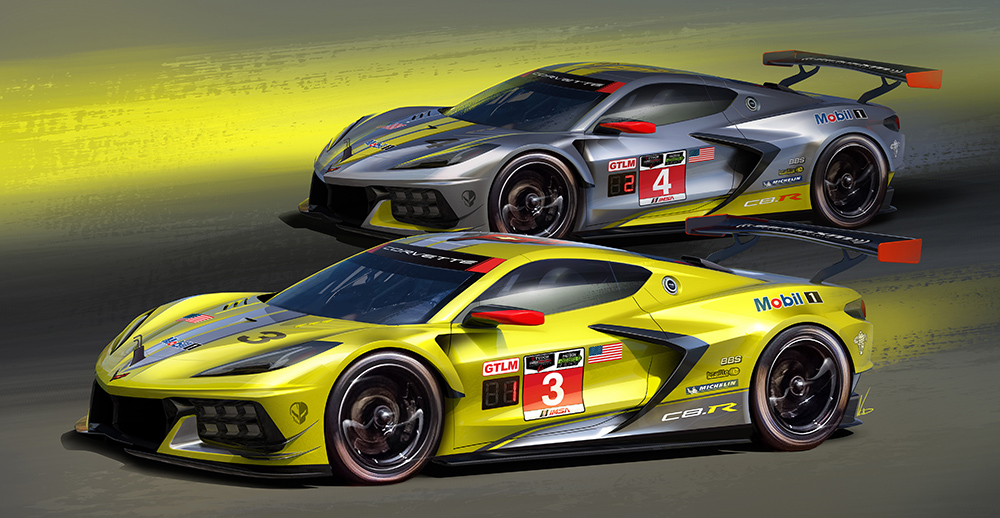
Image: GM





















